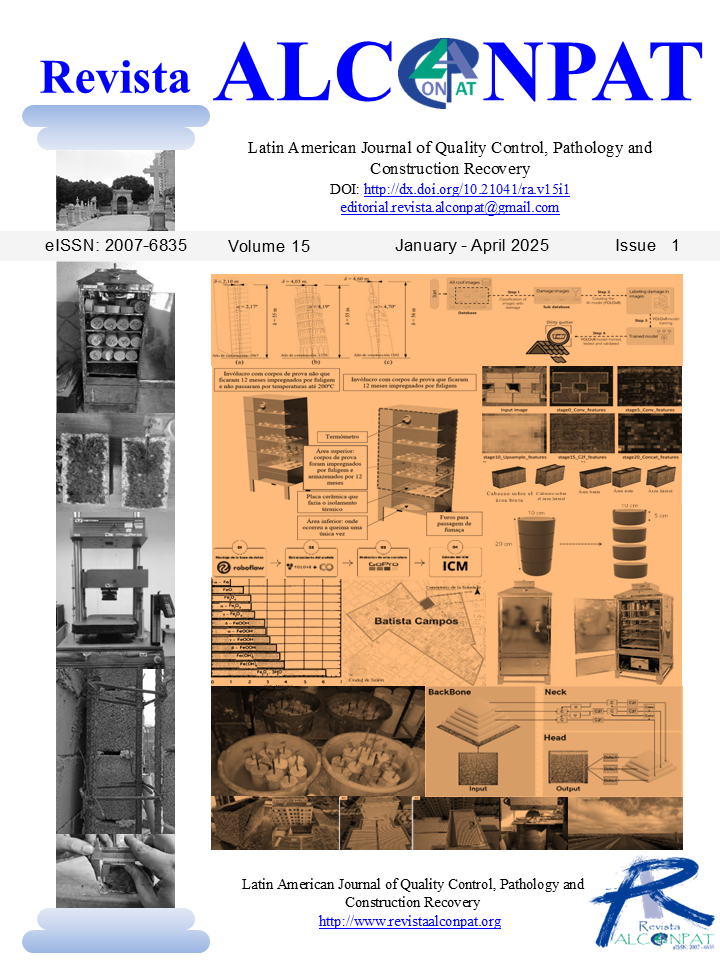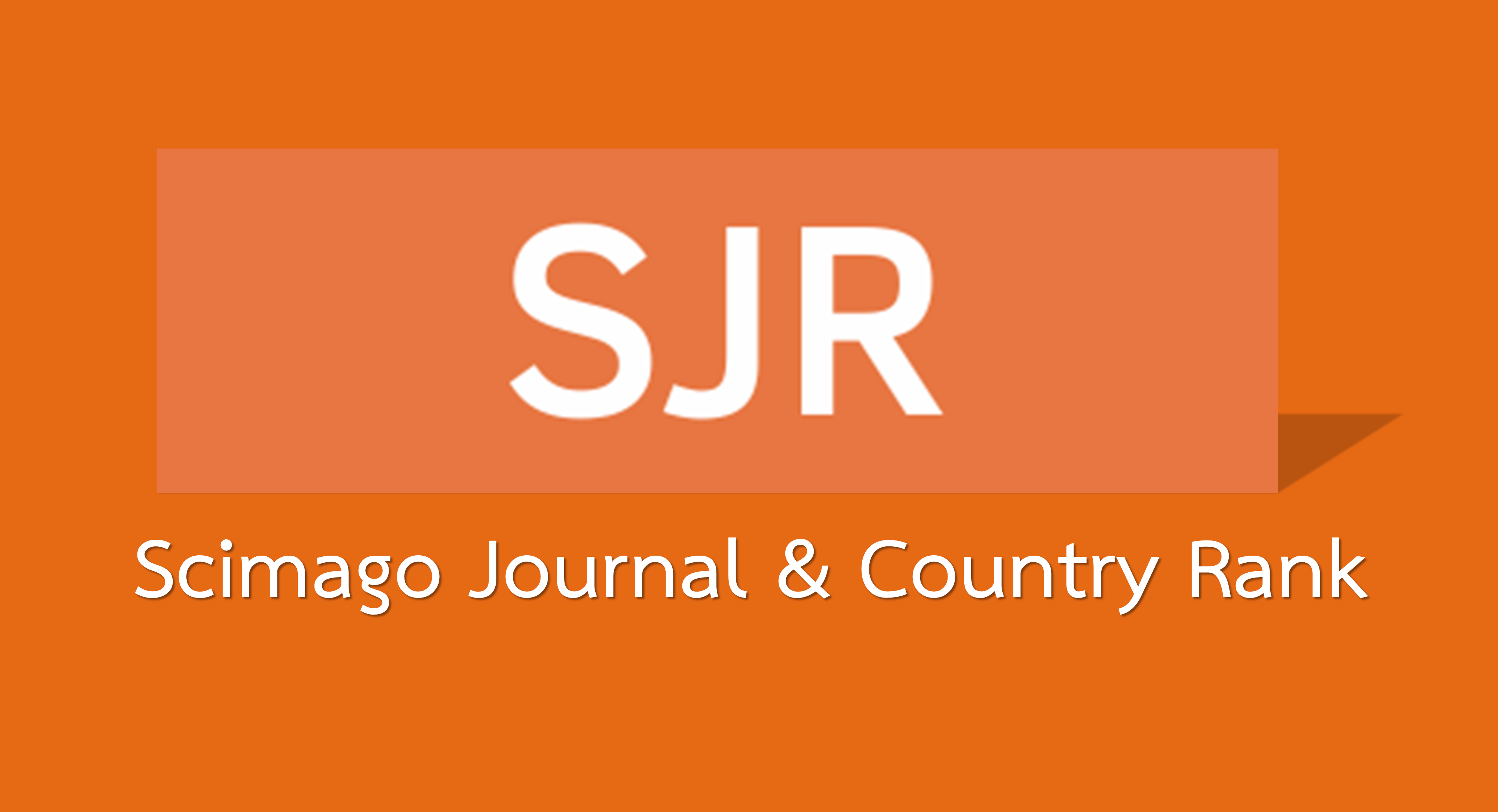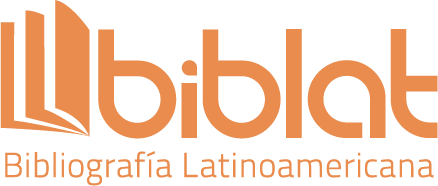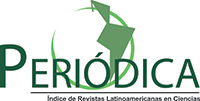Analysis of overturning stability of a historic cemetery entrance structure
DOI:
https://doi.org/10.21041/ra.v15i1.695Keywords:
Evaluation, Historic buildings, Georadar, Lioz stone, TiltAbstract
This study assessed the safety against overturning of an old entrance structure located at the entrance of Lady of Solitude Cemetery (1850) in Belém do Pará/Brazil. A non-destructive technique using ground penetrating radar (GPR) was used to map the existing foundation and the assessment was made by analyzing the action of load on its centroid and comparing the results of the net allowable capacity of the soil with the maximum pressure exerted at the base of the foundation, also, comparing the moment resistance and the overturning moment in terms of the minimum safety factor required. The GPR results revealed the type of shallow foundation with a depth of 1 m; while the geotechnical results showed that there was no tension in contact with the base. The position of the centroid within the column kern resulted in a safety factor 10 times greater than the minimum recommended value.
Downloads
References
American Association of State Highway and Transportation Officials. (1996). AASHTO: Types of loads and composite beams and girders. Washington, DC.
Associação Brasileira de Normas Técnicas. (2014) NBR 6118: Design and execution of reinforced concreteworks. Rio de Janeiro, Brazil (in Portuguese).
Associação Brasileira de Normas Técnicas. (2022) NBR 6122: Projeto e execução de fundações. Rio de Janeiro, Brazil.
American Concrete Institute. (2019). ACI Committee 318: Building Code Requirements for Reinforced Concrete. Detroit, MI, USA.
Briceño-Mena, J. A., Castro-Borges, P. (2022), Practical use of the safety factor in the column repair strategy of a concrete building with historical value, Revista ALCONPAT, 12 (1), pp. 98 – 109, https://doi.org/10.21041/ra.v12i1.569.
Burland, J. B. et al. (2009), Leaning tower of pisa: behaviour after stabilization operations. International Journal of Geoengineering Case Histories, 1(3): 156-169, https://www.geocasehistoriesjournal.org/pub/article/view/ijgch_1_3_2.
Burland, J. B. et al. (2015), Underexcavating the tower of pisa: back to future. eotechnical Engineering Journal of the SEAGS & AGSSEA, 46(4): 126-135.
Edmunds, H. (1993), The use of underexcavation as a means of stabilising the Leaning Tower of Pisa: scale model tests. MSc thesis. Imperial College, London.
Godoy, N. S. (1983), Estimative of pile bearing capacity from static penetrometer results. Engineering School of São Carlos - USP. (in Portuguese)
Hussain, A., Akhtar, S. (2017), Review of Non-Destructive Tests for Evaluation of Historic Masonry and Concrete Structures. Arabian Journal for Science and Engineering, 42, 925–940, https://doi.org/10.1007/s13369-017-2437-y.
IPHAN, available from: https://www.ipatrimonio.org/belem-cemiterio-de-nossa-senhora-da-soledade.
Maffei, C. E. M., Gonçalves, H. H. S., Pimenta, P. M. (2006), The pumbling of 2.2° tilted Núncio Malzoni Building. Geotecnia. 106(06):133-161, https://doi.org/10.14195/2184-8394_106_7.
Meyerhof, G. G. (1963), Some recent research on the bearing capacity of foundations. Canadian Geotechnical Journal, 1(1), 16-26, https://doi.org/10.1139/t63-003.
Radnic, J., Matesan, D., Ante Abaza, A. (2020), Restoration and Strengthening of Historical Buildings: The Example of Minceta Fortress in Dubrovnik. Advances in Civil Engineering, https://doi.org/10.1155/2020/8854397.
Spyrakos, C. C., Nikolettos, G. S. (2005), Overturning Stability Criteria for Flexible Structures to Earthquakes. Journal of Engineering Mechanics 131(4): 349-358, https://doi.org/10.1061/(ASCE)0733-9399(2005)131:4(349).
Tamez, E., Ovando, E., Santoyo, E. (1997), Underexcavation of Mexico City’s Metropolitan Cathedral and Sagrario Church. Proc. 14th Int Conf. Soil Mech & Foundtn Engrg. Hamburg: 4:2105-2126.
Terzaghi, K. (1943), Theoretical Soil Mechanics. WileyPublishing, New York, USA, http://dx.doi.org/10.1002/9780470172766.
Published
How to Cite
Issue
Section
License
_______________________________
License in effect from September 2020
You are free to:
- Share — copy and redistribute the material in any medium or format for any purpose, even commercially.
- Adapt — remix, transform, and build upon the material for any purpose, even commercially.
- The licensor cannot revoke these freedoms as long as you follow the license terms.
Under the following terms:
- Attribution — You must give appropriate credit , provide a link to the license, and indicate if changes were made . You may do so in any reasonable manner, but not in any way that suggests the licensor endorses you or your use.
- No additional restrictions — You may not apply legal terms or technological measures that legally restrict others from doing anything the license permits.
Notices:
You do not have to comply with the license for elements of the material in the public domain or where your use is permitted by an applicable exception or limitation .
No warranties are given. The license may not give you all of the permissions necessary for your intended use. For example, other rights such as publicity, privacy, or moral rights may limit how you use the material.





















.png)














